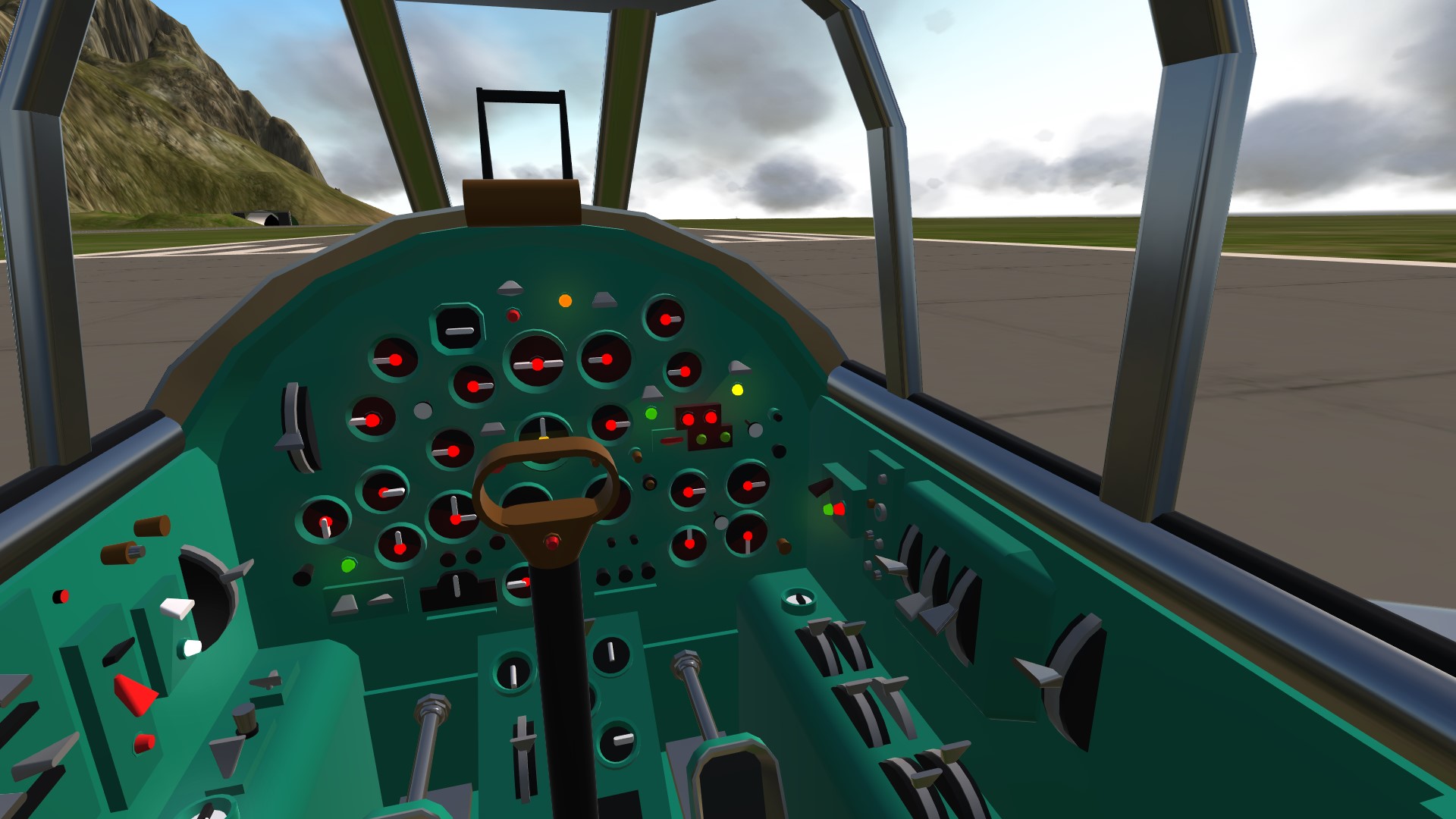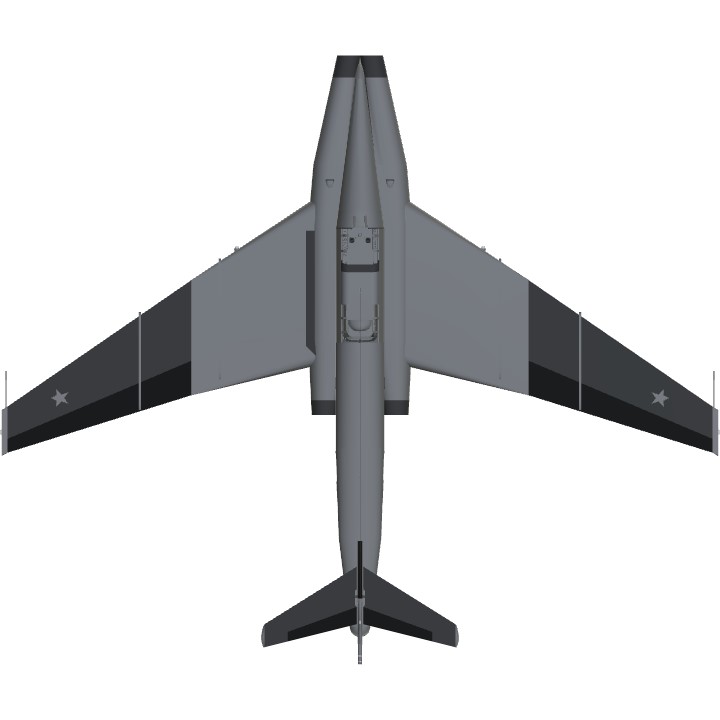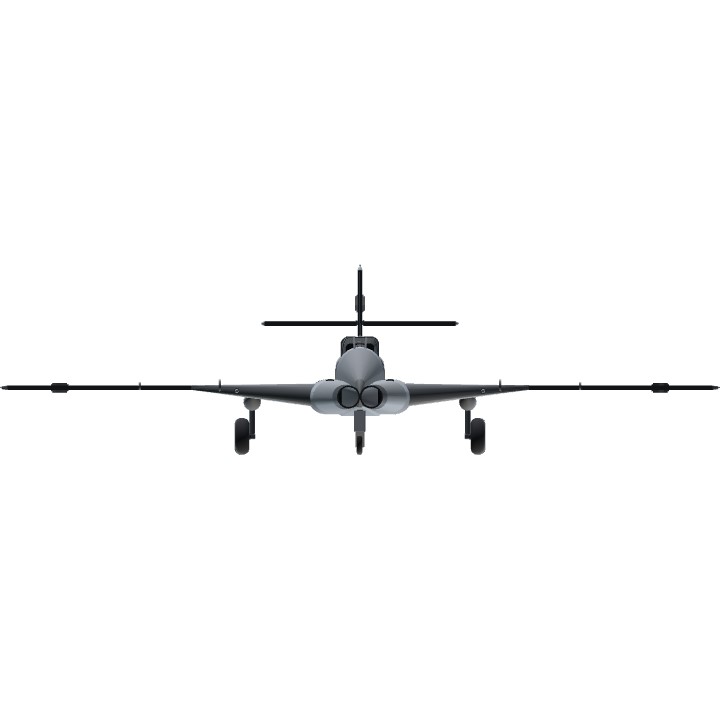( English version at the bottom of the page )
Le texte est un peu long , mais il retrace l'histoire complète de l'avion et ses des essais .
Au début des années 1950, il était désormais clair que les avions à moteur à piston étaient dépassés.
L’avenir appartenait au turboréacteur. La guerre qui avait éclaté en Corée en 1950 rappelait la nécessité de
remplacer les avions obsolètes en service , dont l’avion d’attaque au sol Iliouchine Il-2 surnommé Sturmovik .
Une version modernisée, baptisée Iliouchine Il-10, était arrivé en opérations dans la phase finale de la Seconde Guerre mondiale en Europe.
Une ultime évolution, désignée Il-20, avait volé pour la première fois en décembre 1948 mais avait été refusée par les Forces aériennes
soviétiques du fait de sa conception inhabituelle.
À l’été 1949, le bureau d’études (OKB) N° 240 d’Iliouchine proposa donc le développement d’un avion d'attaque au sol propulsé par
un turboréacteur TV-2 (VK-2). Un décret en Conseil des ministres lança officiellement le projet le 1er février 1952, mais le travail
avait commencé en amont depuis longtemps, et 22 jours plus tard un avant-projet put être présenté aux services officiels.
L’appareil était de construction entièrement métallique, à aile basse avec un train d'atterrissage tricycle. La voilure, assez
épaisse, avait une flèche de 35 degrés.
La conception générale de l’avion reprenait le principe qui avait fait le succès du Il-2 : assurer une protection maximale à l’équipage.
Le fuselage était divisé en quatre parties. La partie centrale, blindée, abritait l’équipage et les réservoirs de carburant.
Le pilote et le mitrailleur étaient logés dans deux postes séparés, non pressurisés mais dotés de sièges éjectables.
Le siège du pilote comprenait un appui-tête et un dossier avec une plaque de blindage de 8 mm d’épaisseur.
Le pare-brise était constitué d’une plaque de verre blindé de 134 mm et les vitres latérales étaient épaisses de 65 mm
Le poids total du blindage atteignait 1 728 kg. Les réacteurs AM-5F étaient disposés de part et d’autre du fuselage, protégés
sur les côtés par un blindage allant de 4 à 16 mm. La pointe avant était libre pour accueillir une batterie de six canons NR-23 de 23 mm.
La défense du secteur arrière se faisait par un affût télécommandé équipé d’un canon TKB-495A (AM-23) approvisionné à 200 obus.
La charge offensive se répartissait entre quatre pylônes pour bombes de 50 kg à 500 kg et quatre soutes de voilure pour bombes de poids inférieur à 100 kg.
Le prototype quitta le hall d’assemblage en février 1953 et effectua son premier vol le 17 mars 1953. Les essais en vol se déroulèrent
sans difficulté, jusqu’aux essais de tir, qui provoquèrent une perte de puissance des réacteurs par manque d’oxygène : le constructeur
avait prévu dans la soute des canons une chambre destinée à assurer l’évacuation des gaz de combustion par une ouverture disposant
d’ouïes réglables, mais ce système s’avéra insuffisant, et les vols furent arrêtés jusqu’à fin septembre 1953 pour modifications.
Les six canons NR-23 furent remplacés par quatre AM-23 à plus forte cadence de tir (1300 coups/minute au lieu de 800 des NR-23) qui équipaient
le bombardier Tupolev Tu-16. En décembre 1953, le ministre de la production aéronautique Dementiev adressa au Conseil des ministres un rapport sur l’achèvement
des essais dans lequel il indiquait que les problèmes d’extinction des réacteurs avaient été totalement résolus par le changement des canons.
En janvier 1954, le prototype débuta ses essais officiels au sein de l’institut expérimental des forces aériennes (NII VVS).
Menés par les ingénieurs Frolov et Rozanoff, ils furent achevés en deux mois par le pilote d'essai Kipelkin et le radio Yablonski. Le compte-rendu indiquait
que la fabrication en série pouvait être lancée, les défauts mis en évidence au cours des essais pouvant être corrigés par la suite.
Ces défauts étaient : une visibilité insuffisante vers l'arrière, tant pour le pilote que pour le mitrailleur, l'absence de chauffage
de cabine, l'impossibilité d'éjection verrière fermée, et des efforts excessifs aux ailerons. Les réacteurs étaient insuffisamment protégés contre
l'ingestion de corps étrangers lors du roulage. La plupart de ces défauts n'étaient pas rédhibitoires. Un problème plus sérieux était l'augmentation de la température
des gaz en amont de la turbine pendant le tir des canons. Le prototype resta au sol presque un an. À l'automne 1955, il fut remis en état de vol et ses moteurs AM-5F furent
remplacés par des Am-9V plus puissants. Mais il ne fut pas possible d'éliminer le phénomène de pompage des moteurs pendant le tir des canons.
La seule solution consistait à avancer les entrées d'air et à installer les canons sous le fuselage. L'aspect de l'appareil en fut fortement modifié.
Outre les deux prototypes fabriqués, l'OKB-240 avait les projets d'un avion-école (Il-40U), d'un avion de reconnaissance (il-40R) et d'un avion
d'observation d'artillerie (Il-40K). Ces projets restèrent sur le papier.
En février 1956, les essais de l'Il-40-2 se terminèrent sur un résultat positif. Son entrée en service était assez probable
pour qu'il reçoive un nom dans le code OTAN : Brawny (musculeux). Un mois plus tard, le ministère de la défense proposa l'avion pour l'équipement des
forces aériennes soviétiques, sans succès. L'avion fut présenté à l'été au maréchal Joukov, alors ministre de la défense, mais il ne manifesta aucun intérêt.
- Réacteur gauche : touche 1 .
- Réacteur droite : touche 2 .
- Feux de navigation : touche 3 .
- Feux d'atterrissage : touche 4 .
- Aérofrein : touche : touche 5 + Freins .
- Deverrouillage armement : touche 6 .
- Verrouillage train avant : touche 8 .
- Trim .
- Volet : touche VTOL
English version .
The text is a bit long, but it traces the complete history of the aircraft and its tests.
By the early 1950s, it was now clear that piston engine airplanes were outdated.
The future belonged to the turbojet engine. The war that had broken out in Korea in 1950 reminded us of the need to
to replace obsolete aircraft in service, including the Ilyushin Il-2 ground attack aircraft nicknamed Sturmovik .
A modernized version, dubbed Ilyushin Il-10, had arrived in operations in the final phase of World War II in Europe.
A final evolution, designated Il-20, had flown for the first time in December 1948 but had been refused by the Air Force
because of its unusual design.
In the summer of 1949, the design office (OKB) No. 240 of Ilyushin therefore proposed the development of a ground attack aircraft powered by
a TV-2 turbojet (VK-2). A decree in the Council of Ministers officially launched the project on February 1, 1952, but the work
had started upstream a long time ago, and 22 days later a preliminary draft could be presented to the official services.
The aircraft was of a fully metallic construction, low wing with a tricycle landing gear. The sails, enough
thick, had an arrow of 35 degrees.
The general design of the aircraft was based on the principle that had made the Il-2 successful: ensuring maximum protection for the crew.
The fuselage was divided into four parts. The armored central section housed the crew and the fuel tanks.
The pilot and the machine gunner were housed in two separate stations, not pressurized but equipped with ejection seats.
The pilot’s seat included a headrest and backrest with an 8 mm thick armor plate.
The windshield consisted of a 134 mm armored glass plate and the side windows were 65 mm thick
The total weight of the armor reached 1,728 kg. The AM-5F reactors were placed on either side of the fuselage, protected
on the sides by a shielding going from 4 to 16 mm. The front point was free to accommodate a battery of six 23-mm NR-23 guns.
The rear sector was defended by a remote-controlled lookout equipped with a TKB-495A (AM-23) cannon supplied with 200 shells.
The offensive load was divided between four pylons for bombs from 50 kg to 500 kg and four wing holds for bombs weighing less than 100 kg.
The prototype left the assembly hall in February 1953 and made its first flight on March 17, 1953. The flight tests took place
without difficulty, until the firing tests, which caused a loss of power of the reactors by lack of oxygen: the manufacturer
had provided in the gun bay a room intended to ensure the evacuation of combustion gases through an opening having
adjustable louvers, but this system proved to be insufficient, and the flights were stopped until the end of September 1953 for modifications.
The six NR-23 guns were replaced by four AM-23 with a higher rate of fire (1300 rounds / minute instead of 800 of the NR-23) which fitted
the Tupolev Tu-16 bomber. In December 1953 the Minister of Aeronautical Production Dementiev sent a report on the completion to the Council of Ministers
tests in which it indicated that the problems of extinction of the reactors had been completely solved by the change of the guns.
In January 1954, the prototype began formal testing at the Air Force Experimental Institute (NII VVS).
Led by engineers Frolov and Rozanoff, they were completed in two months by test pilot Kipelkin and radio Yablonski. The report indicated
that mass production could be launched, the defects revealed during the tests could be corrected later.
These defects were: insufficient visibility towards the rear, for both the pilot and the machine gunner, the absence of heating
cabin, the impossibility of ejection closed glass, and excessive efforts to the ailerons. The reactors were insufficiently protected against
ingestion of foreign bodies while driving. Most of these defects were not unacceptable. A more serious problem was the increase in temperature
gases upstream of the turbine during the firing of the cannons. The prototype remained on the ground for almost a year. In the fall of 1955, it was returned to flight condition and its AM-5F engines were
replaced by more powerful Am-9V. But it was not possible to eliminate the phenomenon of pumping of the motors during the firing of the guns.
The only solution was to advance the air intakes and install the guns under the fuselage. The appearance of the device was greatly modified.
In addition to the two prototypes produced, the OKB-240 had plans for a training aircraft (Il-40U), a reconnaissance aircraft (Il-40R) and an aircraft
artillery observation (Il-40K). These projects remained on paper.
In February 1956, the tests of the Il-40-2 ended with a positive result. Its entry into service was quite likely
so that it receives a name in the NATO code: Brawny (muscular). A month later, the Ministry of Defense proposed the plane to equip the
unsuccessful Soviet air forces. The plane was presented in the summer to Marshal Zhukov, then Minister of Defense, but he showed no interest.
- Left reactor: button 1.
- Right reactor: button 2.
- Navigation lights: button 3.
- Landing lights: button 4.
- Air brake: button: button 5 + Brakes.
- Arm unlocking: key 6.
- Front axle locking: button 8.
- Trim.
- Shutter: VTOL button
Specifications
General Characteristics
- Predecessor Yak 17 UTI C 3 ver 5
- Created On Windows
- Wingspan 51.3ft (15.6m)
- Length 43.3ft (13.2m)
- Height 13.5ft (4.1m)
- Empty Weight 17,871lbs (8,106kg)
- Loaded Weight 29,567lbs (13,411kg)
Performance
- Power/Weight Ratio 2.28
- Wing Loading 132.9lbs/ft2 (648.8kg/m2)
- Wing Area 222.5ft2 (20.7m2)
- Drag Points 7321
Parts
- Number of Parts 544
- Control Surfaces 9
- Performance Cost 1,741







@XEPOH , Thanks for your upvote .
@UseGooglePlay , thank for your upvote .
@Hpaccelli , thank for your upvote .
@Hpaccelli , thank for your upvote .
Awesome! Never heard of it.
oui
@NoNoLesGaz , tu est français ?
@NoNoLesGaz , merci pour ton commentaire . Cela fait vraiment plaisir .
rien que pour la "petite histoire" qui accompagne une construction de qualité ;)
@NoNoLesGaz , thank for your upvote .
@Tinitro , c'est Google Traduction . Je n'ai pas vu cette faute .
LegnaK , thank for your upvote .
@LegnaK , thank for your upvote .
@Trainzo You're welcome!
@DaDerpachu123 , thank for your upvote .
@Mumpsy , thank for your upvote .
@Den4ik1337 , I did a lot of research, the plans that I could find do not necessarily correspond to the photos of the real plane. To my knowledge, there are no photos of the cockpit. I did this with photos of other Russian jets of the time. For the rest, I only took photos of the real aircraft as a model. I have another version in preparation. If you have documents and you agree to share them, I am interested.
Your are welcome.
@Trainzo
@grizzlitn , merci mon ami . J'espère que tu vas bien .
@Trainzo de rien, et toutes mes felicitation pour le platinum
@TheRealTDawg , @Treadmill103 , thanks for your upvotes .
@Trainzo the cockpit is quite good I'd say, but the whoe shape of the plane is a bit ugly. I mean, air intakes and the wing are too straight (comparing to the blueprints). The stabilizers are not really cool also. You can check out my IL-40 and compare both of these with the blueprints
@Trainzo Np
@Gameboi14 , My screen may not be super top .
@Den4ik1337 , You can expand your comment, it's interesting .